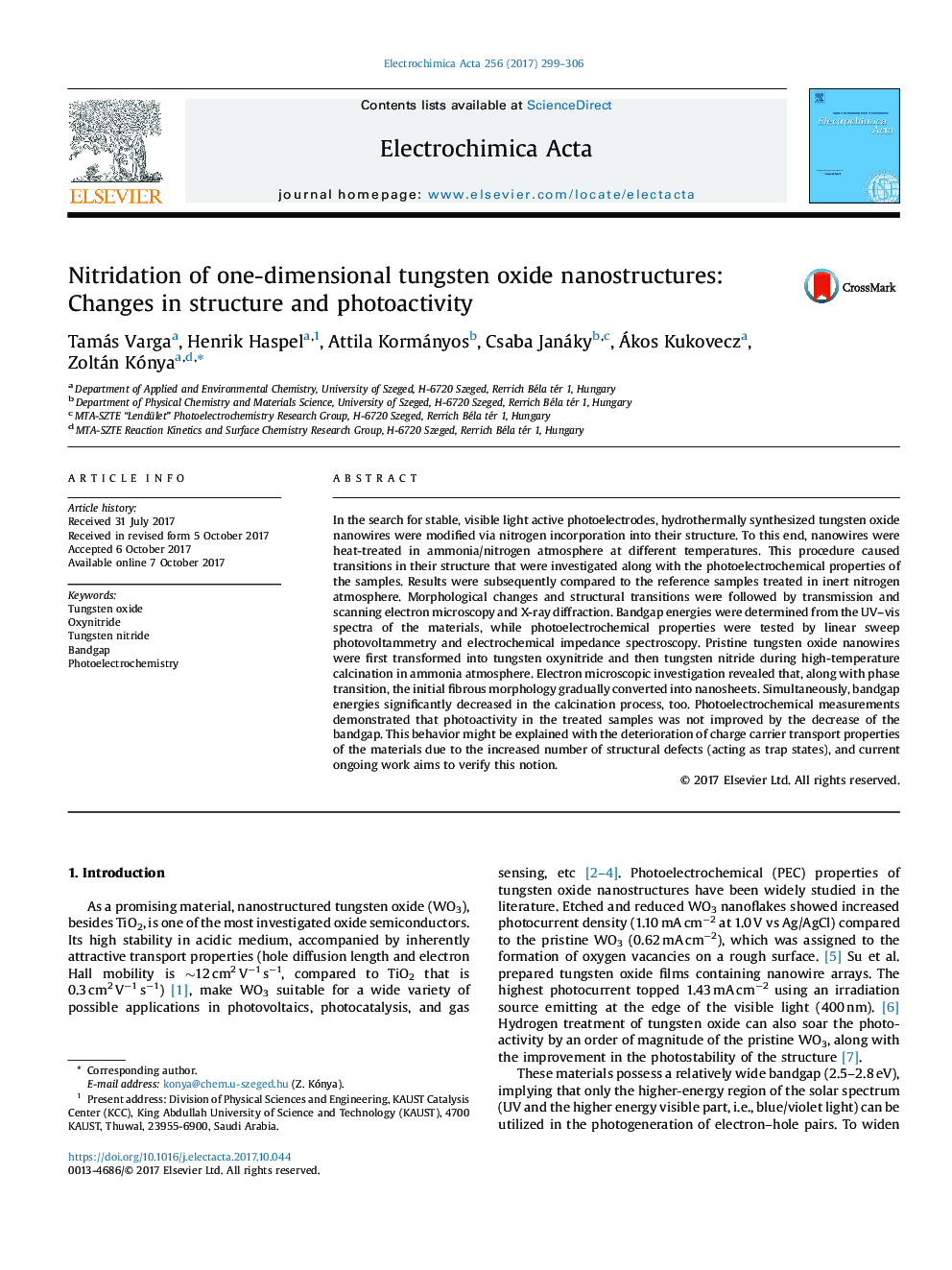| Article ID | Journal | Published Year | Pages | File Type |
|---|---|---|---|---|
| 4766638 | Electrochimica Acta | 2017 | 8 Pages |
Abstract
In the search for stable, visible light active photoelectrodes, hydrothermally synthesized tungsten oxide nanowires were modified via nitrogen incorporation into their structure. To this end, nanowires were heat-treated in ammonia/nitrogen atmosphere at different temperatures. This procedure caused transitions in their structure that were investigated along with the photoelectrochemical properties of the samples. Results were subsequently compared to the reference samples treated in inert nitrogen atmosphere. Morphological changes and structural transitions were followed by transmission and scanning electron microscopy and X-ray diffraction. Bandgap energies were determined from the UV-vis spectra of the materials, while photoelectrochemical properties were tested by linear sweep photovoltammetry and electrochemical impedance spectroscopy. Pristine tungsten oxide nanowires were first transformed into tungsten oxynitride and then tungsten nitride during high-temperature calcination in ammonia atmosphere. Electron microscopic investigation revealed that, along with phase transition, the initial fibrous morphology gradually converted into nanosheets. Simultaneously, bandgap energies significantly decreased in the calcination process, too. Photoelectrochemical measurements demonstrated that photoactivity in the treated samples was not improved by the decrease of the bandgap. This behavior might be explained with the deterioration of charge carrier transport properties of the materials due to the increased number of structural defects (acting as trap states), and current ongoing work aims to verify this notion.
Related Topics
Physical Sciences and Engineering
Chemical Engineering
Chemical Engineering (General)
Authors
Tamás Varga, Henrik Haspel, Attila Kormányos, Csaba Janáky, Ákos Kukovecz, Zoltán Kónya,
